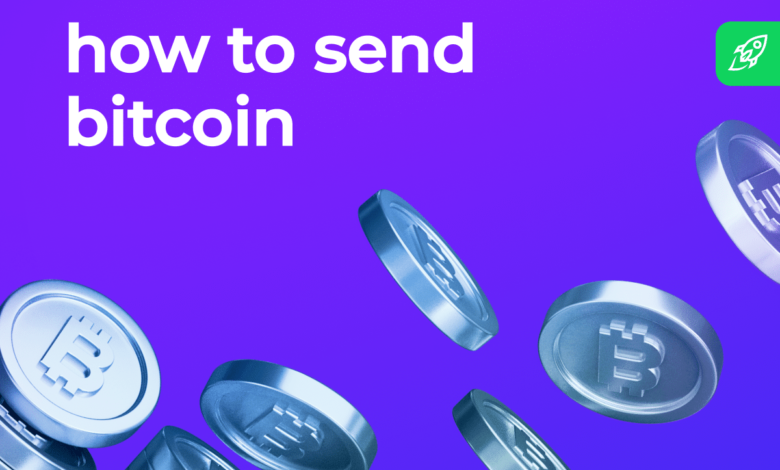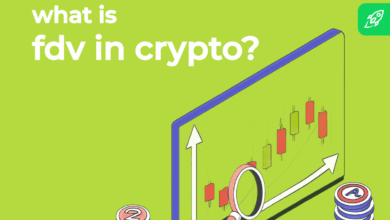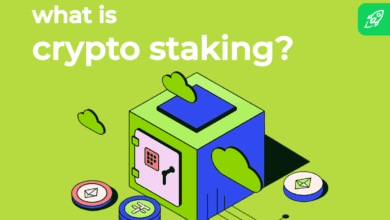A Beginner’s Guide To Sending Crypto

If you’re new to the world of cryptocurrency, sending Bitcoin might seem like a daunting task. However, once you get the hang of it, it’s as straightforward as sending an email. Whether you’re sending Bitcoin to make a purchase, transfer funds to a friend, or even for educational purposes, this guide will walk you through how to send Bitcoin step-by-step.
How to Send Bitcoin
To send Bitcoin, obtain the recipient’s BTC address, which is a unique string of alphanumeric characters or a QR code. In your wallet software, navigate to the Send section, enter the recipient’s address and the amount of Bitcoin you wish to send, and set the network fee if needed. Review all the details carefully and confirm the transaction. Your Bitcoin will be sent through the blockchain network; you will be able to track its status using a block explorer.
Of course, in order to send it, you also need to have Bitcoin. You can get BTC by exchanging other cryptocurrencies for it, or you can buy Bitcoin online on Changelly. You will also need a Bitcoin wallet, which can be a hardware, software, or web-based wallet.
What Is a Bitcoin Address?
A Bitcoin address is a unique identifier that allows you to send and receive Bitcoin. Think of it as your bank account number but for cryptocurrency. Each BTC address consists of a string of alphanumeric characters, typically starting with a “1,” “3,” or “bc1.” Here’s an example of what a Bitcoin address looks like:
1A1zP1eP5QGefi2DMPTfTL5SLmv7DivfNa
To send crypto, including Bitcoin, you’ll need the recipient’s wallet address. This address can be usually found in their crypto wallet software under the Receive section. You can either copy this address manually or scan the QR code to ensure accuracy.
Before sending Bitcoin…
- Double-check the crypto wallet address: Bitcoin transactions are irreversible. Make sure you copy the recipient’s address correctly.
- Consider using QR codes: Many wallets support QR codes, making it easier to scan the recipient’s address.
- Test with a small amount: If you’re sending a large amount of Bitcoin, consider making a small test transaction first to ensure everything works correctly.
What is the Bitcoin Network Fee?
The Bitcoin network fee, also known as the transaction fee, is a small amount of Bitcoin paid to miners to process and confirm your transaction on the Bitcoin blockchain. This fee ensures that your transaction is validated and included in the next block.
What happens if I set the Bitcoin fee too low?
Setting a Bitcoin fee too low can result in your transaction taking a long time to be confirmed, or in some cases, it might not be confirmed at all. Here’s what you need to know:
- Delayed Confirmation: If the fee is too low, miners might prioritize other transactions with higher fees. Your transaction could be stuck in the mempool (a waiting area for unconfirmed transactions) for an extended period.
- Transaction Expiry: If a transaction remains unconfirmed for too long, it might eventually be dropped from the network. In this case, the Bitcoin will return to your wallet, but this can take days or even weeks.
- Manual Re-broadcast: Some wallets allow you to manually re-broadcast the transaction with a higher fee if it hasn’t been confirmed in a reasonable time.
How to Send Bitcoin to Another Wallet
Here is a step-by-step guide on how to send BTC to another wallet.
Step 1. Choose Your Wallet
First, ensure you have a Bitcoin wallet. There are several types to choose from:
- Hardware wallet: A physical device that stores your private keys offline, such as Trezor or Ledger.
- Software wallet: Applications for your computer or mobile device, like Electrum or Mycelium.
- Web wallet: Online services, such as Coinbase or Blockchain.com.
- Bitcoin Cash wallet: If you’re dealing with Bitcoin Cash, make sure your wallet supports it specifically.
Step 2. Obtain the Recipient’s Wallet Address
The recipient’s Bitcoin address can be in the form of a string of characters or a QR code. You need either to make a transaction.
Step 3. Enter the Transaction Details
In your wallet software, go to the Send section and enter:
- the recipient’s wallet address
- the amount of Bitcoin you want to send
- the network fee (some wallets allow you to set it manually)
Step 4. Review and Confirm
Double-check all the details, including the recipient’s address and the amount. Once you’re sure everything is correct, confirm the transaction.
Step 5. Wait for Confirmation
After sending, your transaction will be broadcast to the Bitcoin network. You can track its status using a block explorer.
Examples of Wallets Supporting These Features:
- Hardware wallets: Ledger Nano S, Trezor Model T
- Software wallets: Exodus, AliceBob Wallet
- Web wallets: Coinbase, Binance
How to Send Bitcoin on Cash App
Sending Bitcoin in Cash App is a straightforward process. You can use a debit card, bank transfer, or Bitcoin from your Cash App balance. First, make sure you have Bitcoin in your Cash App account: if you don’t, start by purchasing it with a debit card or bank transfer. Then, tap the Banking tab, select Bitcoin, tap the Airplane button, and choose Send Bitcoin. Next, enter the amount you want to send and the recipient’s $cashtag or Bitcoin address in the address field.

Before you confirm your Bitcoin transaction, review the destination address and network conditions as well as all transaction details, including network fees. Ensure the recipient address is correct to avoid any loss of funds. Then, tap Confirm & Send to complete the transfer.
How to Send Bitcoin on PayPal
To send Bitcoin (BTC) on PayPal, start by navigating to the Finances tab and selecting your crypto balance. Next, tap the transfer arrows and choose Send. If you want to send BTC to one of your PayPal contacts, sync your contacts by tapping Sync Your Contacts and allow PayPal to access them. Select the contact you want to send Bitcoin to, or enter an external crypto address if you’re transferring outside of PayPal.
You can either copy and paste the external address, manually enter it, or scan the QR code by tapping the QR code button. Ensure the address is correct because sending Bitcoin to an incorrect address will result in loss of funds. If you’re sending PYUSD to an external address, confirm the network on the blockchain network confirmation screen.
Enter the amount of Bitcoin you wish to send. You can specify the exact amount in BTC or in dollars, and PayPal will convert it to the equivalent amount of crypto. Review the transaction details and tap Send Now to complete the transfer.
How to Send Bitcoin to an Exchange
Sending Bitcoin to an exchange involves transferring your Bitcoin from your wallet to the exchange’s wallet. First, obtain your unique deposit address from the exchange — it is typically shown to you during the transaction process. In your wallet, select the option to send crypto, enter the exchange’s deposit address, and specify the amount. Review the network fees and transaction details before confirming the transfer.
How to Send Bitcoin on Venmo
To transfer Bitcoin on Venmo, first, ensure that your identity is verified. Go to the Crypto tab and select Bitcoin (BTC) as the cryptocurrency you wish to send. Tap the transfer arrows in the bottom right corner and then tap Send. Enter the recipient’s information, which can be a Venmo username, an external wallet address, or a recent recipient.
Specify how much crypto you want to send, and Venmo will calculate any applicable BTC network fee. Carefully review the transaction details: crypto transfers are irreversible, and sending Bitcoin to an incorrect address will result in a loss of funds. Once all the information is confirmed, tap Send to complete the transfer.
How to Receive Crypto
Whether you’re expecting a payment, a transfer from another wallet, or simply building your crypto portfolio, it is important to know how to receive Bitcoin and other cryptocurrencies.
Setting Up Your Wallet
To receive Bitcoin, you need a Bitcoin wallet (e.g., a hardware wallet like Ledger or Trezor, a software wallet such as Exodus, or a web wallet provided by platforms like Binance). Ensure your wallet is secure and that you have access to the private keys or recovery phrases.
Obtaining Your Wallet Address
Your wallet address is a unique identifier, similar to a bank account number, that you provide to the sender. You can find your address in the Receive section of your wallet. It will be a string of alphanumeric characters, and you can often present it as a QR code for convenience.

Sharing Your Address
Share your wallet address with the sender. Double-check the address to avoid any errors, as Bitcoin transactions are irreversible.
Confirming the Transaction
Once the sender initiates the transaction, you can monitor the status using a block explorer. The transaction will appear as “pending” until it is confirmed by the Bitcoin network. Depending on the network congestion and the Bitcoin fees paid by the sender, this could take anywhere from a few minutes to an hour or more.
Using Received Crypto
After receiving Bitcoin, you can hold it in your wallet, use it for purchases, send it to another wallet, or trade it on an exchange. Always ensure your internet connection is secure when accessing your wallet to manage your crypto.
Tips for Receiving Bitcoin
- Check Fees: Be aware of any Bitcoin fees associated with receiving transactions. Some wallets may charge a small fee for processing incoming transactions.
- Use a Secure Wallet: Ensure your Bitcoin wallets are secure and that you use reputable wallet software.
- Monitor Network Congestion: High network congestion can affect transaction times. Be patient if your transaction is taking longer than usual.
- Enable Notifications: Many wallet apps offer notifications for incoming transactions, which can help you keep track of your funds.
- Backup Your Wallet: Regularly backup your wallet’s private keys or recovery phrases to avoid losing access to your Bitcoin.
FAQ: How Do I Send Bitcoin to Someone Else or Myself
How much does it cost to send Bitcoin?
The cost to send Bitcoin varies based on network congestion and transaction size. When the network is busy, fees tend to rise. Typically, fees range from a few cents to several dollars. Using a lower fee can result in longer confirmation times.
How do I send Bitcoin to friends?
To send crypto to friends, you need their wallet address. In your wallet, navigate to the Send section, enter their address and the amount of Bitcoin (or any other crypto you want to send), and confirm the transaction. You can also use a debit card linked to your crypto wallet for instant transfers.
How are Bitcoin fees determined?
Transaction fees are not fixed and can vary depending on several factors:
- Network congestion: When the Bitcoin network is busy, fees tend to rise. High demand for transactions can lead to higher fees.
- Transaction size: The size of your transaction in bytes can affect the fee. Larger transactions (in terms of data, not value) require higher fees.
- Speed of confirmation: Higher fees can result in faster confirmation times. If you need your transaction confirmed quickly, you might want to pay a higher fee.
How to use a Bitcoin machine to send money?
To use a Bitcoin machine (ATM) to send money, locate a nearby Bitcoin ATM, insert cash or use your debit card to buy Bitcoin, and enter the recipient’s wallet address or scan their QR code. Confirm the transaction, and the machine will send crypto to the specified address.
How long does Bitcoin take to send?
Bitcoin transactions typically take between 10 minutes to an hour for confirmation. The time can vary based on network congestion and the transaction fee you set. A higher fee can result in faster confirmation times, especially during peak periods.
Do I need a Bitcoin wallet address to send BTC?
Yes, you need the recipient’s Bitcoin wallet address to send BTC. This address ensures that the Bitcoin reaches the correct destination. You can also scan the recipient’s QR code for accuracy. Always double-check the address to avoid errors in transactions.
Disclaimer: Please note that the contents of this article are not financial or investing advice. The information provided in this article is the author’s opinion only and should not be considered as offering trading or investing recommendations. We do not make any warranties about the completeness, reliability and accuracy of this information. The cryptocurrency market suffers from high volatility and occasional arbitrary movements. Any investor, trader, or regular crypto users should research multiple viewpoints and be familiar with all local regulations before committing to an investment.





